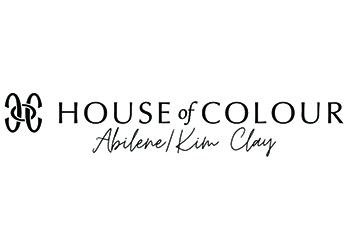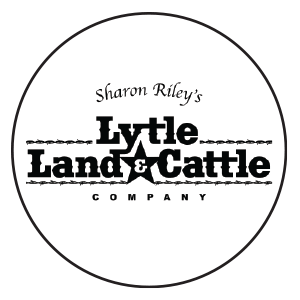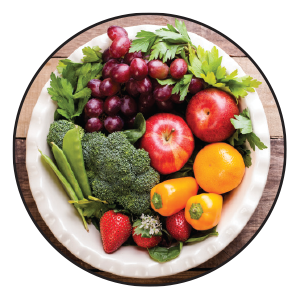Spring has arrived, with all of its bright flavors and smells – aromatic herbs, blooming flowers and the natural sweetness of fresh fruits. While spring is the perfect opportunity to use them at their peak of flavor and freshness, it’s also the ideal time to preserve these flavors for the months ahead. That’s where tinctures come in, giving you an excellent way to bottle up spring and savor it long after the season has passed. Tinctures are not only great for cocktails and mocktails, but they also provide unique and creative additions to cooking and baking.
 WHAT IS A TINCTURE?
WHAT IS A TINCTURE?
A tincture is essentially a concentrated infusion of an ingredient (such as herbs, fruits, vegetables or spices) into a high-proof spirit, typically vodka or grain alcohol. The process involves steeping the chosen ingredient in alcohol for days, weeks or even months, depending on the strength and complexity desired. Once strained, the resulting liquid is a powerful flavor concentrate. Most of us unknowingly use tinctures on a regular basis. Every time you reach for your bottle of vanilla extract you are grabbing a tincture!
WHY CREATE TINCTURES?
Tinctures preserve those fleeting seasonal flavors for months (or even years). Tinctures also allow you to incorporate flavors that are more intense and nuanced than traditional infusions or extracts. A single drop can make a significant impact on a drink’s flavor without altering its balance. Whether you’re into floral lavender, bright citrus or sweet peaches, tinctures let you hold onto those springtime flavors, year round in an easily stored bottle.
IS ALCOHOL REQUIRED TO MAKE THEM?
Well, that answer is a little complicated. It isn’t entirely required, but the product produced is significantly improved through the use of alcohol. Why?
• Alcohol is a polar solvent, which means it can dissolve both water-soluble and fat-soluble compounds. This allows you to create a tincture from just about anything.
• Alcohol naturally preserves the tincture for long periods, keeping it stable without refrigeration.
• Alcohol is a very efficient extractor for flavor. Using it significantly speeds up the extraction process compared to other methods like water infusions.
• Alcohol absorbs flavor more readily than alternatives due to its chemical properties, particularly its ability to interact with aromatic molecules in food. Essentially, alcohol acts as a carrier for these aromas, helping us experience more nuanced flavors when consuming a food or beverage that contains it. A great example of this is when you add a splash of wine to a sauce, the alcohol can draw out and amplify the subtle flavors of herbs and spices, creating a more complex taste experience.
*If you want to try tinctures without alcohol you can simply use water, vinegar or vegetable glycerin. Keep in mind you will get a sweeter product when using vegetable glycerin, closer to an infused simple syrup.
HOW TO MAKE YOUR OWN TINCTURES
Making tinctures is as simple as picking your favorite ingredients and letting them hang out with a high-proof spirit like vodka or grain alcohol, ideally 35%-40% alcohol by volume (though any liquor would work). Here’s how:
1. Choose Your Ingredients: Pick fresh herbs, flowers, fruits or vegetables, your own creativity is nearly the only limitation on the flavor profile of each tincture.
2. Prepare the Ingredients: Lightly crush or bruise the herbs to release their essential oils. Wash and chop your fruit or veggies. If you’re using flowers, make sure they are free of pesticides.
3. Infuse: Fill a jar with your ingredients and pour in the alcohol or alternative of choice until it covers them completely. Seal it up and let it sit in a cool, dark place for a few days to several weeks. Shake it gently each day or whenever you pass by it. How do you know when it’s ready? If you’re brave, simply sample a drop on the tongue, or my preferred method is just add a couple drops to a glass of sparkling water to see how the flavors are developing. It’s ready when you like the flavor and intensity.
4. Strain & Bottle: Once your tincture has reached the desired strength, strain out the solids and bottle the liquid. Now, you’ve got your very own custom tincture! When using, remember it’s important to start with a small amount, just a dash or couple drops and adjust to taste, as it can quickly overpower any drink or recipe.
Fun Flavor Ideas for Spring Tinctures
• Lavender Lemon: Lavender flowers steeped in vodka with a splash of lemon zest – the ultimate spring refresher for your gin fizz or martini.
• Rosemary Mint: Perfect for mojitos or juleps, this blend adds a cool, herbal twist that brings your cocktails to life.
• Elderflower Citrus: Combine elderflower with lemon or orange zest for a delicate, floral citrusy infusion that’s great in a spritz or gin cocktail.
• Strawberry Basil: Summer’s sweet fruit, paired with fragrant basil makes for a perfect addition to your next rum or vodka cocktail.
• Peach Jalapeno: A sweet and spicy fusion that’s the perfect balance for a bold, refreshing cocktail like a margarita or a tequila smash.
 Lavender Lemonade
Lavender Lemonade
INGREDIENTS
• 1 ounce lemon juice
• 1 ounce lime juice
• 1 ½ ounces lavender syrup
• 4 ounces (or to taste preference) still or sparkling water
STEPS
1. Combine all ingredients and pour over ice.
2. Optional – garnish with fresh or dried lavender sprigs or a fresh lemon wheel
*To turn this into a cocktail, simply mix 4 ounces of lemonade with 1.5 ounces of Bourbon or your favorite liquor.
Lavender Syrup
INGREDIENTS
• 4 tablespoons dried lavender or ¾ cup fresh lavender
• 1 cup sugar
• 1 cup water
• Juice of ½ a lemon
STEPS
1. Combine water, sugar and lavender blossoms in a small saucepan over medium-high heat.
2. Bring to a boil, stirring until sugar dissolves. Reduce heat and simmer for 5 minutes. Remove from heat and let syrup steep for about 30 minutes.
3. Remove from heat and pour through a fine mesh strainer to remove lavender.
4. Add the lemon juice and store in an airtight container in the refrigerator.
 White Peach Sangria
White Peach Sangria
INGREDIENTS
• 1 bottle (750 ml) Albariño wine (or any dry white wine would work well)
• 6 ounces Fino Sherry
• 4 ounces Apricot Liqueur
• 4 ounces fresh lemon juice
• 3 ounces semi-rich simple syrup (1.5:1 sugar:water)
• 1/2 peach, sliced
• 1/2 lemon, sliced
• 4-5 strawberries, sliced
• Garnish with additional fresh fruit slices or herbs of choice
STEPS
1. Combine all ingredients into a serving pitcher and pour over ice.
2. Top each glass with a splash of sparkling water.
3. Garnish individual glasses with additional fruit slices or herbs as desired.
*This sangria has bright, juicy peach notes that perfectly balance the crispness of dry wine, making it incredibly light, refreshing and ideal for any spring gathering. While most sangrias are best after a few days of maceration, I actually prefer this recipe freshly mixed right before drinking to maintain its vibrant flavors.
Wildflower Mezcal Sour
INGREDIENTS
- 1 ounce tequila
- 1 ounce Mezcal
- ½ ounce elderflower cordial or sub elderflower liqueur such as St-Germain elderflower liqueur
- 1 ounce lavender syrup
- 1 ounce fresh lime juice
- Optional 1 egg white
STEPS
- In a cocktail shaker, combine all ingredients and egg white (if using).
- If using egg white, do a dry shake (shake without ice) first to emulsify the egg and create froth, about 10-15 seconds.
- Add ice to the shaker and shake until sufficiently chilled.
- Strain into a coupe glass or the cup of your choice.
- Garnish with a lemon wheel or my favorite…a lightly flamed lavender sprig.

Hugo Spritz
INGREDIENTS
- ½ ounce elderflower cordial or sub elderflower liqueur such as St-Germain elderflower liqueur
- 1-2 sprigs of mint
- 4 ounces prosecco, chilled
- 2 ounces soda water, chilled
- Garnish with mint sprig and lime wheel
STEPS
- Add the elderflower cordial or liqueur and mint sprig into a wine glass. Gently muddle and let sit for 2 minutes.
- Add ice, prosecco and soda water, and stir briefly and gently to combine.
- Garnish with a mint sprig and a lime wheel.
Erin’s notes:
*The Hugo Spritz originated in Italy, around 2005, created by bartender Roland Gruber. The drink quickly gained popularity in Europe, especially in Italy, Austria and Germany, and has since been making its way around the world. It’s a crisp light low ABV cocktail that’s perfect for spring and summer. It also happens to be one of my personal favorites!
*If you’d like to keep this a mocktail, simply skip the prosecco and do all soda water with your cordial.
 Elderflower Cordial
Elderflower Cordial
INGREDIENTS
- 4-6 heads of fresh elderflower blooms or 2-3 tablespoons dried elderflower
- 2 teaspoons citric acid
- 1 cup water
- ½ of a lemon sliced
- 1 cup sugar
STEPS
- When using fresh elderflower heads, you want them to be white and unfolded, and not brown – the brown ones are already on their way to becoming elderberries. Shake the stems well or let them rest for a couple of hours before use so that you can remove any little bugs that might be hiding. Keep in mind that most of the flavor lives in the yellow powder that sits on the flowers, and you don’t want to remove too much of that.
- Combine all ingredients in a saucepan and bring to a boil.
- Once boil is reached, remove from heat and let infuse together at room temp for 1-3 days.
- Strain through a fine mesh sieve or cheesecloth, and store in an airtight container in the refrigerator.
Erin’s Notes:
*It is possible to make this elderflower cordial without the citric acid, but the taste will be slightly different, and the cordial won’t keep as long.
By Erin Estill
Photos By Shayli Anne Photography
RELATED: The Bee’s Knees
































Leave a Reply